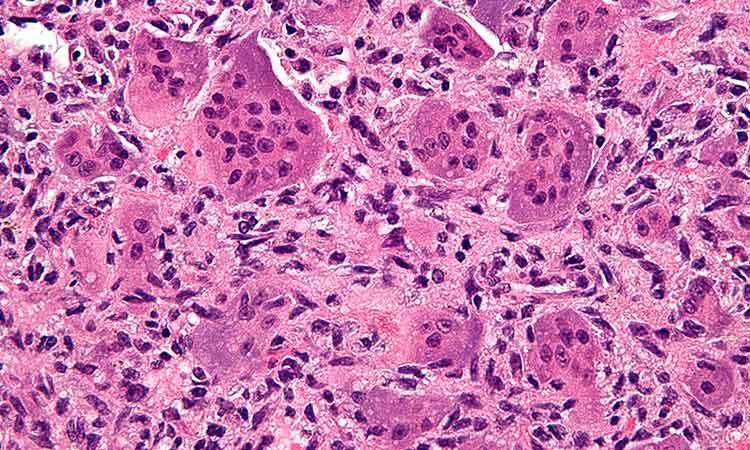The topic of this article will revolve around Sermorelin peptide and tumor cell research. The 29 amino acid peptide Sermorelin is the shortest peptide that has been synthetically created and may have the potential to stimulate biological activity. Researchers speculate there is a one-to-one correspondence between Sermorelin and the growth hormone-releasing hormone (GHRH) [i].
Analogous to the GHRH factor, the Sermorelin polypeptide consists of GHRH (1-29 acid)-amide. This structure is known as a GHRH factor analog. Because of the presence of this structure, Sermorelin has been the subject of studies in various scientific research subfields dealing with growth hormone deficiencies [ii].
It wasn't until the early 1980s that researchers began investigating the function of the growth hormone fragment known as GHRF (1-29) amide. Exogenous GHRF (1-29) amide was introduced to control and anesthetized rat models during a series of research studies. The researchers suggested that the presence of GHRF seemed to promote growth by stimulating the pituitary gland. As a result of this notion, growth hormone secretagogues like Sermorelin have emerged as potentially useful molecules for advancing research into growth hormone deficiency [iii].
Sermorelin Peptide Overview
A growth hormone analog, Sermorelin, has the first 29 amino acids out of the typical 44 amino acids in the growth hormone (HGH). The researchers hypothesize that Sermorelin may connect with the growth hormone receptors on the pituitary gland, and they further hypothesize that the synthetic peptide may increase the secretion of growth hormones. The fact that the peptide may not substantially change the levels of prolactin, insulin, cortisol, glucose, or thyroid hormones is considered the peptide's primary potential, as further suggested in the research studies listed below [iv]. These studies can be found lower down this page. Most of the possible functions of the peptide are speculated to be comparable to those of the natural growth hormone.
Sermorelin Peptide Research and Clinical Investigations
Sermorelin Peptide and Growth Hormone
After testing positively for idiopathic growth hormone insufficiency, Sermorelin was given to not fully matured test subjects. Within the first year of constant and continuous peptide presence, an increased growth rate and a height velocity appeared to be detected. The findings suggest that after a constant presence, these increased levels were suggested to have been maintained for an average of 36 months, as speculated by the reports [v].
Sermorelin Peptide and Lipodystrophy
To evaluate the potential of Sermorelin [vi], researchers set out a controlled clinical trial that included 31 HIV-positive subjects that also exhibited Lipodystrophy. All 31 subjects were split into two groups; one group was given Sermorelin, while the other was given a placebo for 12 weeks. Both groups were given the same amount of substance. After the trial, the research team suggested that the growth hormone levels looked to be significantly raised in subjects given Sermorelin compared to those given a placebo. Insulin-like growth factor (IGF-1)levels have appeared to have elevated, leading to increased lean body mass in the subjects given the peptide. The researchers speculated a potential reduction in visceral fat in the abdominal region and the ratio of fat in the trunk to fat in the lower extremities. It was suggested that neither the glucose nor the insulin levels appeared to have changed in any other way. [vi]
Sermorelin Peptide and Mental Processes
Clinical research studies were carried out with 89 mature test subjects at the beginning of the twenty-first century. These studies aimed to investigate the correlation, if any, between decreasing growth hormone release and reduced cognitive function. Scientists believe growth hormone levels normally fall with age, reducing physiological processes, including cognition (the ability to collect, process, and recall information). As a result of Sermorelin being given to these subjects, it was hypothesized that the test subjects displayed an apparent improvement in their performance on the Wechsler Adult Intelligence Scale (WAIS), which manifested itself as higher IQ levels, as well as improved performance on picture arrangement tests. [vii]
Sermorelin Peptide and Tumor Cells
Clinical research was designed and conducted in which Glioma test subjects were given over 4,000 compounds simultaneously. After each presentation, a DRS score was calculated for each subject across the board and for each chemical. The research findings suggested Sermorelin appeared to have produced the greatest sensitivity in those that participated in the tests. After conducting an investigation, the researchers hypothesized that this might be the case because Sermorelin could inhibit the cell cycles of tumors and, as a result, might be able to stop the proliferation of tumor cells. [viii]
Sermorelin Peptide and Hypogonadism
Initial studies into the peptide suggested that prolonged Sermorelin influence might effectively raise the lean mass percentage in test subjects. The condition known as hypogonadism, thought to be caused by an increase in fat mass, was the primary focus of these studies.
Test models were split into two groups; one group was given Sermorelin first, then GHRH 1-40, with a week's break in between; the other group was given the identical mix of substances but in the opposite sequence. The results of the tests were compared. Following the completion of the trial, the researchers revealed their findings, speculating that Sermorelin appeared to promote the release of FSH and LH in both groups, which in turn might stimulate the synthesis of testosterone.
More investigation is required to explore its potential in scientific research, and these studies must continue. Only academic and scientific institutions can use Sermorelin. Please be aware that none of the items mentioned are approved for human or animal consumption. Laboratory research chemicals are only for in-vitro and in-lab use. Any kind of physical introduction is illegal. Only authorized scientists and working professionals may make purchases. The contents of this article are intended only for educational purposes.
References
[i] Prakash, A, and K L Goa. “Sermorelin: a review of its use in the diagnosis and treatment of children with idiopathic growth hormone deficiency.” BioDrugs : clinical immunotherapeutics, biopharmaceuticals and gene therapy vol. 12,2 (1999): 139-57. https://pubmed.ncbi.nlm.nih.gov/18031173/
[ii] National Center for Biotechnology Information. “PubChem Compound Summary for CID 16129620, Sermorelin” PubChem, https://pubchem.ncbi.nlm.nih.gov/compound/Sermorelin
[iii] Clark, R G, and I C Robinson. “Growth induced by pulsatile infusion of an amidated fragment of human growth hormone releasing factor in normal and GHRF-deficient rats.” Nature vol. 314,6008 (1985): 281-3. https://pubmed.ncbi.nlm.nih.gov/2858818/
[iv] Junichi I. et al, Growth hormone secretagogues: history, mechanism of action, and clinical development, JSCM Rapid Communications Vol. 3 Issue 1, 09 February 2020. https://onlinelibrary.wiley.com/doi/full/10.1002/rco2.9
[v] Prakash, A, and K L Goa. “Sermorelin: a review of its use in the diagnosis and treatment of children with idiopathic growth hormone deficiency.” BioDrugs : clinical immunotherapeutics, biopharmaceuticals and gene therapy vol. 12,2 (1999): 139-57. https://pubmed.ncbi.nlm.nih.gov/18031173/
[vi] Koutkia, Polyxeni et al. “Growth hormone-releasing hormone in HIV-infected men with lipodystrophy: a randomized controlled trial.” JAMA vol. 292,2 (2004): 210-8. https://pubmed.ncbi.nlm.nih.gov/15249570/
[vii] Vitiello, Michael V et al. “Growth hormone releasing hormone improves the cognition of healthy older adults.” Neurobiology of aging vol. 27,2 (2006): 318-23. https://pubmed.ncbi.nlm.nih.gov/16399214/
[viii] Chang, Yuanhao et al. “A potentially effective drug for patients with recurrent glioma: sermorelin.” Annals of translational medicine vol. 9,5 (2021): 406. doi:10.21037/atm-20-6561. https://www.ncbi.nlm.nih.gov/pmc/articles/PMC8033379/


















